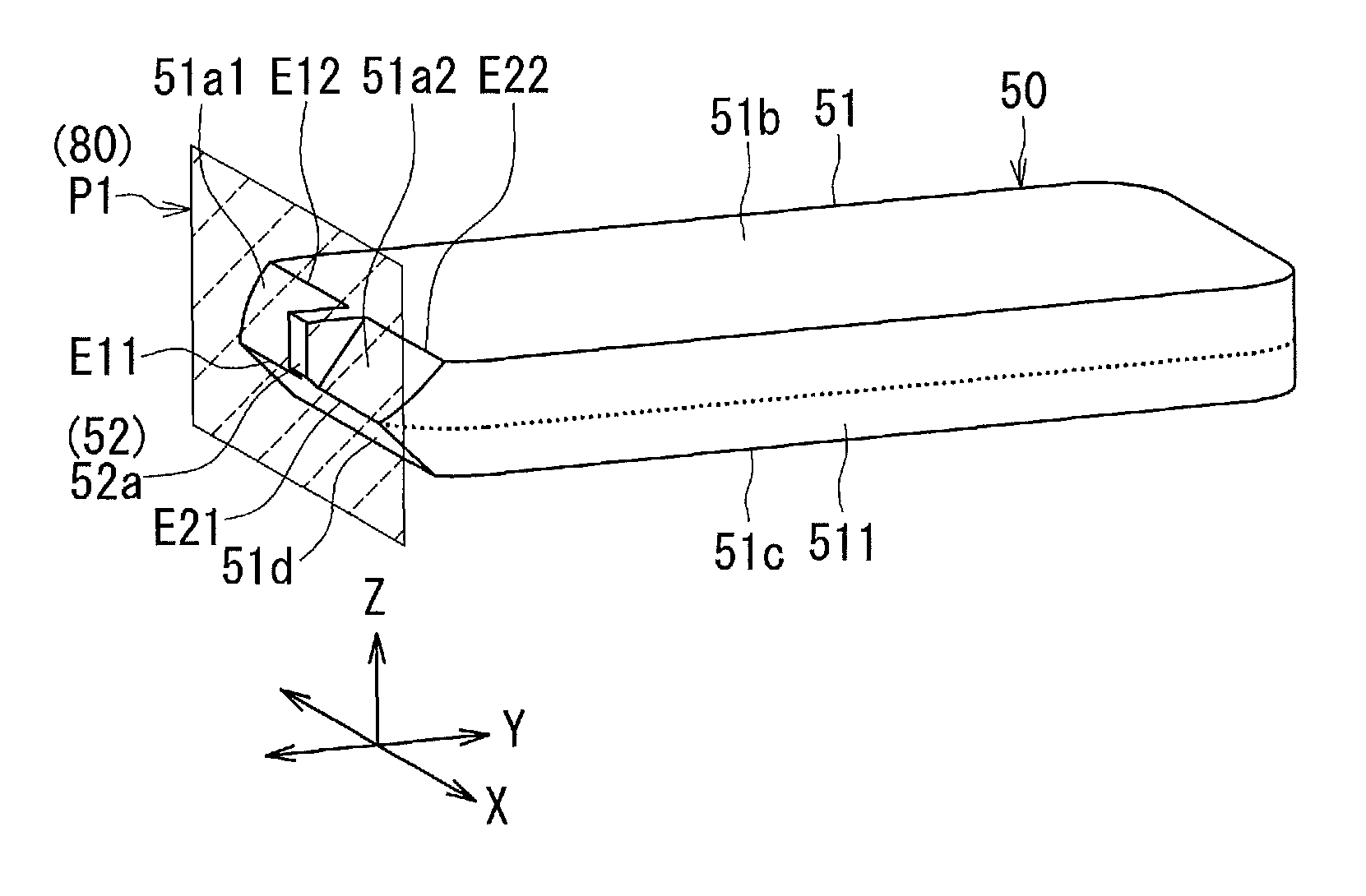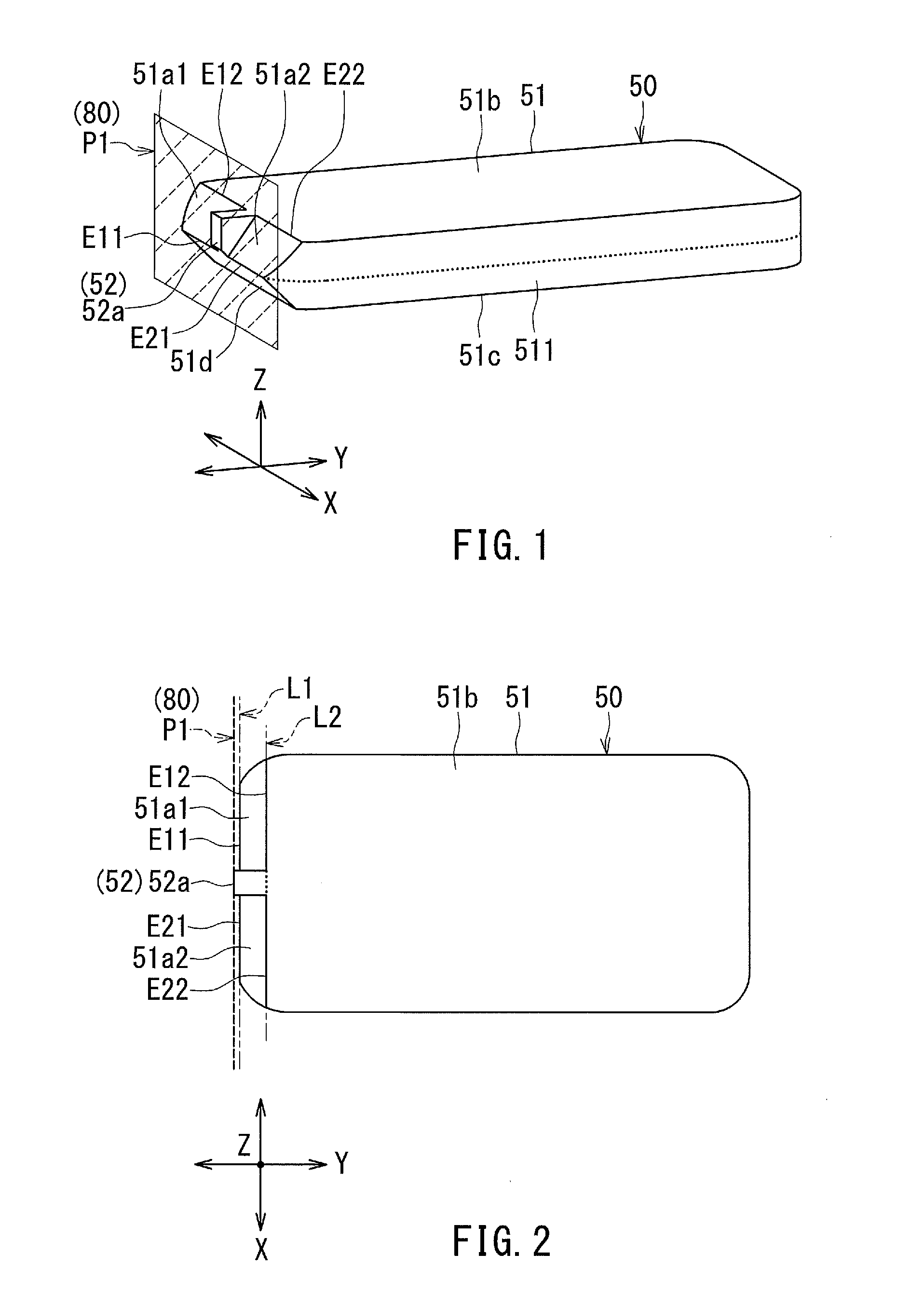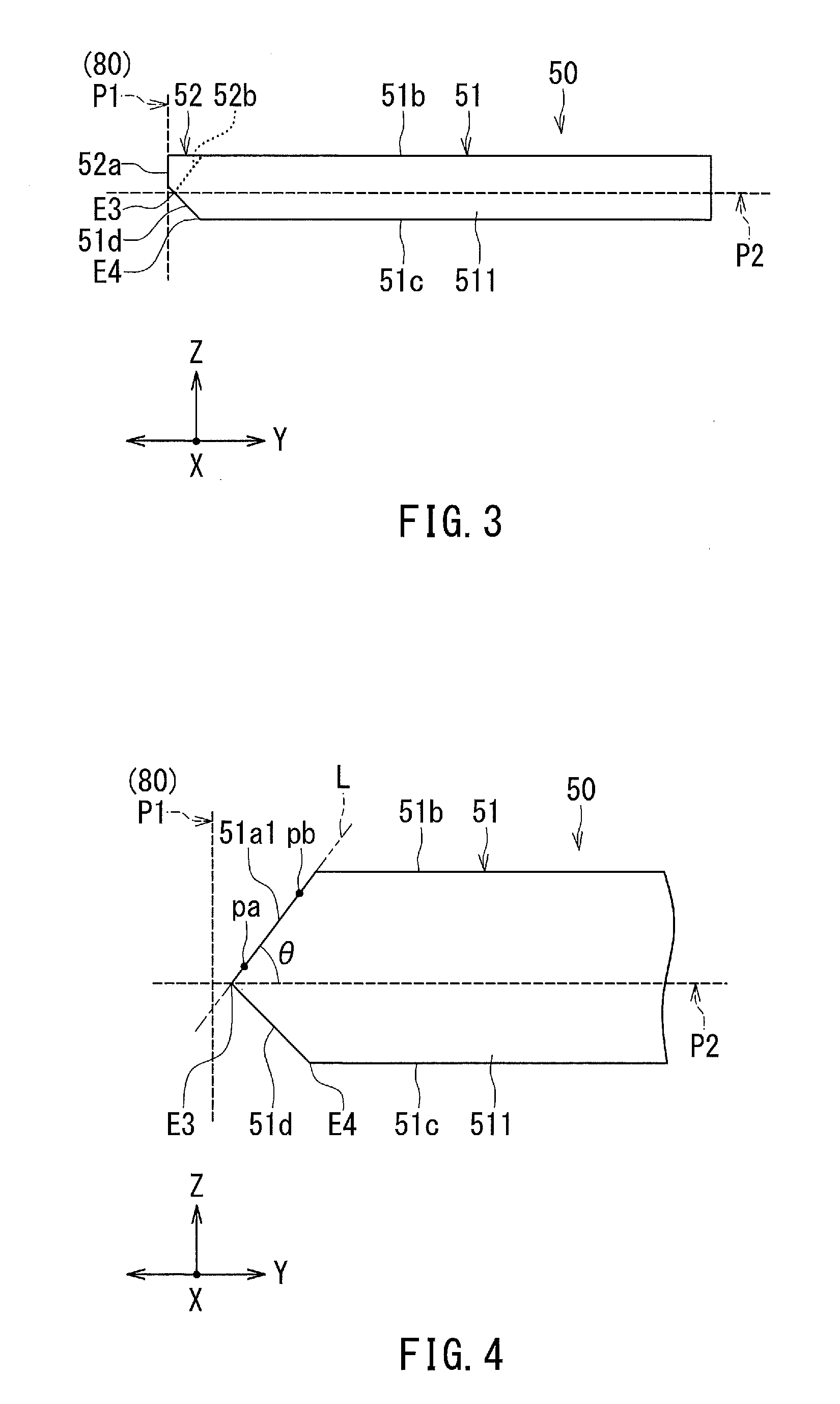Plasmon generator including a main body and a front protrusion
- Summary
- Abstract
- Description
- Claims
- Application Information
AI Technical Summary
Benefits of technology
Problems solved by technology
Method used
Image
Examples
first embodiment
[0072]Preferred embodiments of the present invention will now be described in detail with reference to the drawings. First, reference is made to FIG. 5 to FIG. 11 to describe the configuration of a thermally-assisted magnetic recording head according to a first embodiment of the invention. FIG. 5 is a perspective view showing the main part of the thermally-assisted magnetic recording head. FIG. 6 is a cross-sectional view showing the main part of the thermally-assisted magnetic recording head. FIG. 7 is a front view showing the main part of the thermally-assisted magnetic recording head. FIG. 8 is a cross-sectional view showing the configuration of the thermally-assisted magnetic recording head. FIG. 9 is a front view showing the medium facing surface of the thermally-assisted magnetic recording head. FIG. 10 is a plan view showing a first layer of a coil of the present embodiment. FIG. 11 is a plan view showing a second layer of the coil of the present embodiment.
[0073]The thermall...
modification examples
[0190]First to fourth modification examples of the plasmon generator 50 according to the present embodiment will now be described. FIG. 22 is a plan view showing the first modification example of the plasmon generator 50. In the first modification example, the top surface 51b of the main body 51 of the plasmon generator 50 is shaped differently than in FIGS. 1 and 2. More specifically, in the first modification example, the width of the top surface 51b in the track width direction (the X direction) gradually increases with increasing distance from the first imaginary plane P1 (the medium facing surface 80), and then becomes constant.
[0191]FIG. 23 is a plan view showing the second modification example of the plasmon generator 50. In the second modification example, the top surface 51b of the main body 51 of the plasmon generator 50 is shaped differently than in FIGS. 1 and 2. More specifically, in the second modification example, most part of the top surface 51b increases in width in...
second embodiment
[0198]A plasmon generator according to a second embodiment of the invention will now be described with reference to FIG. 26. FIG. 26 is a perspective view showing the plasmon generator 50 according to the present embodiment. In the present embodiment, the thickness (the dimension in the Z direction) of the plasmon generator 50 and the dimension of the near-field light generating surface 52a in the Z direction are smaller than in the first embodiment.
[0199]Reference is now made to FIG. 27 to describe how the manufacturing method for the plasmon generator 50 according to the present embodiment differs from the manufacturing method according to the first embodiment. FIG. 27 shows a stack of layers formed in the process of manufacturing a thermally-assisted magnetic recording head including the plasmon generator 50 according to the present embodiment. The components of the thermally-assisted magnetic recording head, except the plasmon generator 50, are shaped and located as in the first...
PUM
 Login to View More
Login to View More Abstract
Description
Claims
Application Information
 Login to View More
Login to View More - R&D
- Intellectual Property
- Life Sciences
- Materials
- Tech Scout
- Unparalleled Data Quality
- Higher Quality Content
- 60% Fewer Hallucinations
Browse by: Latest US Patents, China's latest patents, Technical Efficacy Thesaurus, Application Domain, Technology Topic, Popular Technical Reports.
© 2025 PatSnap. All rights reserved.Legal|Privacy policy|Modern Slavery Act Transparency Statement|Sitemap|About US| Contact US: help@patsnap.com



